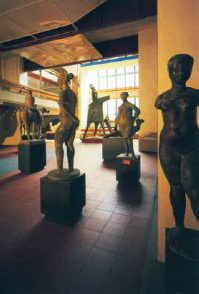Few nations suffered more than Italy during World War II. Italians were killed by Allied troops, German soldiers, and other Italians. From 1940 into 1943, Italy was one of the Axis powers. Then, from 1943 through 1945, while Allied troops fought the Germans in Italy, the country was also ravaged by a civil war between anti-fascist partisans on one side and Germans and Italian fascists on the other. So perhaps it is not surprising that after 60 years, WW II and the nation’s subsequent civil war are still an important reality in the life of this country.
Just last year, Italy tried German soldiers in abstentia for atrocities committed against Italian civilians during the war. The war years are frequently the subject of newspaper and TV documentaries. In Italy today one hears more about the civil war of 1943–45 than about the war in Ethiopia in 1935-36, often seen as one of the conflicts that paved the way to WWII.
Civil wars always leave a long legacy. In the United States, the divisions underlying the Civil War of 1861–65 lasted for at least 100 years. But that war was fought among regions. After it was over, former enemies did not typically live in the same town or even on the same street. In Italy, they did—and still do. After WWII, Italy declared amnesty for crimes (except for the most egregious ones) committed by Italians during the war. This avoided a long period of war trials, but the bitterness did not fade.
Old allegiances are perpetuated. Indeed, the political struggles of today are often seen as a modern continuation of the civil war of 1943–45. The terms ‘communist’ and ‘fascist’ have been dropped from the vocabulary of political invective in Europe—except in Italy.
Although the partisan movement drew groups of various political stripes, in today’s politics, the left sees itself as the successor to the communists and other leftists who spearheaded the partisan effort.
For example, Liberation Day, April 25, is a national holiday marking the date the war ended in Italy in 1945 with the surrender of German and Italian fascist soldiers. But the holiday is not truly ‘national’. Instead, it is primarily a celebration of the Italian left as they highlight their role as legitimate heirs of the anti-fascist struggle. Each April 25 posters advertise an anniversary celebration of the city’s liberation from the Germans, thanks to partisan forces.
(In reality, when the Germans fled, the first to arrive may well have been partisan bands, but the Germans retreated only because of the advancing Allied troops. While the trumpeting of the partisans’ role in Italy focuses on that part of WWII history that is least embarrassing for Italy, some Italians believe the partisan bands were in fact ‘young hoodlums’ who used their power to settle personal differences.)
The left also sees much of Italy’s right as neo-fascist. Perhaps with reason. An unrepentant fascist in Italy once said that in 1943 there were millions of declared fascists in Italy and in 1946 only four (of which he was one). When Mussolini’s son, a non-political jazz pianist, died recently, the people outside the funeral, giving the fascist salute were old Italians, not young skin-heads. As far as we know, Hitler had no children, but if he had left descendents, it is not likely that old Germans would be giving the Nazi salute at their funerals.
In the 19th century, the Austrian statesman Metternich said that Italy was not a country but merely a ‘geographical expression’. The most significant theme of Italian history, after the country was united in the 1860s, has been how to create a nation from a hodgepodge of principalities, regions, and dialects.
With mass media and universal education, all Italians now understand the Italian language even if they speak a dialect in their daily lives. Despite the noise from the Northern League, Italy is not going to be divided in two. Still, except when the national soccer team takes the field, Italy has a noticeably low level of national pride and unity.
Getting beyond the legacy of World War II and the civil war won’t resolve Italy’s lack of a national identity, but it might be a step in the right direction.






